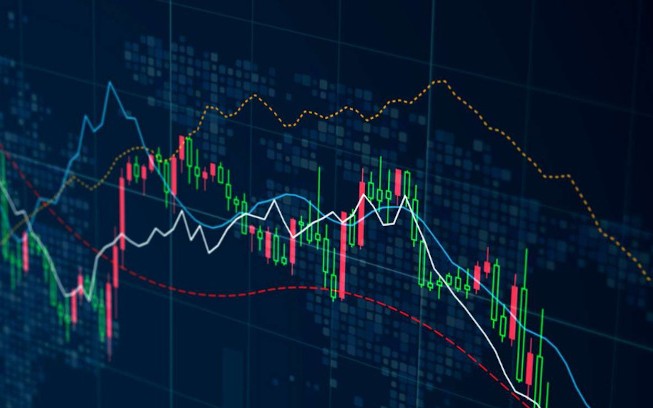The Rise of Automated Trading in Forex Navigating the Future of Currency Trading

The Rise of Automated Trading in Forex
In the ever-evolving landscape of finance, automated trading forex Online Trading CM stands out as a beacon for innovative trading solutions. Among these innovations, automated trading in the foreign exchange (Forex) market has garnered significant attention. As traders increasingly seek to leverage technological advancements, automated trading systems have emerged as valuable tools that can provide significant advantages over traditional trading methods. In this article, we delve into the mechanics of automated trading, explore its benefits, discuss its implementation, and consider the future of Forex trading.
Understanding Automated Trading
Automated trading refers to the use of computer algorithms and software to execute trading orders in the financial markets. These systems analyze market data at high speeds and execute trades based on predetermined criteria, allowing for rapid and efficient decision-making that is not influenced by emotional biases. Automated trading in Forex can range from simple trading bots that execute trades on behalf of the trader to sophisticated systems that utilize advanced statistical analysis and machine learning.
Benefits of Automated Trading
The advantages of automated trading systems are numerous and can significantly improve a trader’s performance. Here are some key benefits:
- Emotion-Free Trading: Automated systems execute trades based on data and algorithms, eliminating emotional decision-making that can often lead to losses.
- Backtesting Capabilities: Traders can backtest their strategies using historical data to assess their effectiveness before deploying them in live markets.
- Increased Efficiency: Automated trading allows for simultaneous monitoring and trading of multiple currency pairs, something that is nearly impossible for a human trader.
- Speed of Execution: Automated systems can execute trades within milliseconds, capitalizing on market opportunities that manual traders may miss.
- Consistency: Automated trading ensures that strategies are executed consistently without the influence of fatigue or market stress.
Types of Automated Trading Systems
There are several types of automated trading systems used in Forex. Some of the most common types include:
- Expert Advisors (EAs): These are automated trading strategies created for MetaTrader platforms (MT4/MT5). They can analyze the market, place trades, and manage accounts based on specific parameters.
- Custom Trading Bots: Traders can develop their own bots using programming languages like Python, allowing for customization based on personal trading strategies.
- Social Trading Platforms: Services that allow users to copy trades from experienced traders automatically, integrating social elements with automated trading.
- Algorithmic Trading Systems: These are complex systems designed for high-frequency trading (HFT) that rely on advanced mathematical models to exploit market inefficiencies.

Implementing an Automated Trading Strategy
Implementing an automated trading strategy involves several steps, including:
- Define Your Trading Goals: Understand what you want to achieve with automated trading, whether it’s increasing profitability, reducing risk, or enhancing trading efficiency.
- Choose a Trading Strategy: Select a strategy that’s compatible with automated trading, such as trend following, mean reversion, or breakout strategies.
- Backtest Your Strategy: Use historical data to test the strategy’s effectiveness. This step is crucial to identify potential flaws and optimize parameters.
- Select a Trading Platform: Choose a suitable trading platform that supports automated trading, such as MetaTrader, NinjaTrader, or custom solutions.
- Monitor and Optimize: Once your system is up and running, continuously monitor its performance and make necessary adjustments based on changing market conditions.
Challenges of Automated Trading
While automated trading offers many advantages, it also comes with challenges that traders must navigate:
- Technical Issues: Problems with networks, software malfunctions, or unpredicted market events can affect trade execution.
- Over-Optimization: Focusing too much on historical data can lead to strategies that perform well in backtesting but fail in real-world scenarios (curve fitting).
- Lack of Adaptability: Automated systems may struggle to adapt to sudden market changes, requiring manual intervention.
- Dependency on Technology: Heavy reliance on automated systems can hinder traders from developing their skills and understanding market dynamics.
The Future of Automated Trading in Forex
The future of automated trading in the Forex market looks promising, driven by advancements in artificial intelligence (AI), machine learning, and data analytics. As technology continues to evolve, it is likely that:
- Automated systems will become more sophisticated, leveraging deep learning and neural networks to analyze large datasets.
- Integration with blockchain technology may enhance the security and transparency of automated trading systems.
- Increased access to financial markets through democratization will enable a broader range of traders to leverage automated strategies.
- Regulatory frameworks will adapt to address new challenges posed by automation in trading.
Conclusion
Automated trading in Forex offers a revolutionary approach to trading that enables traders to harness the power of technology for better decision-making and efficiency. While it is not without its challenges, understanding and properly implementing automated trading strategies can lead to significant advantages in the competitive currency trading landscape. As the technology continues to advance, traders who embrace automated trading are likely to find themselves at the forefront of the Forex market’s evolution.